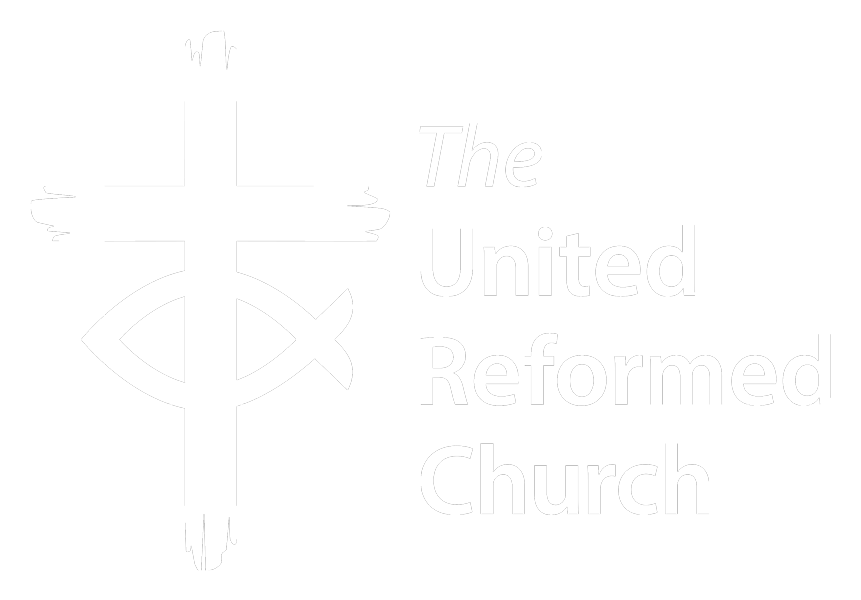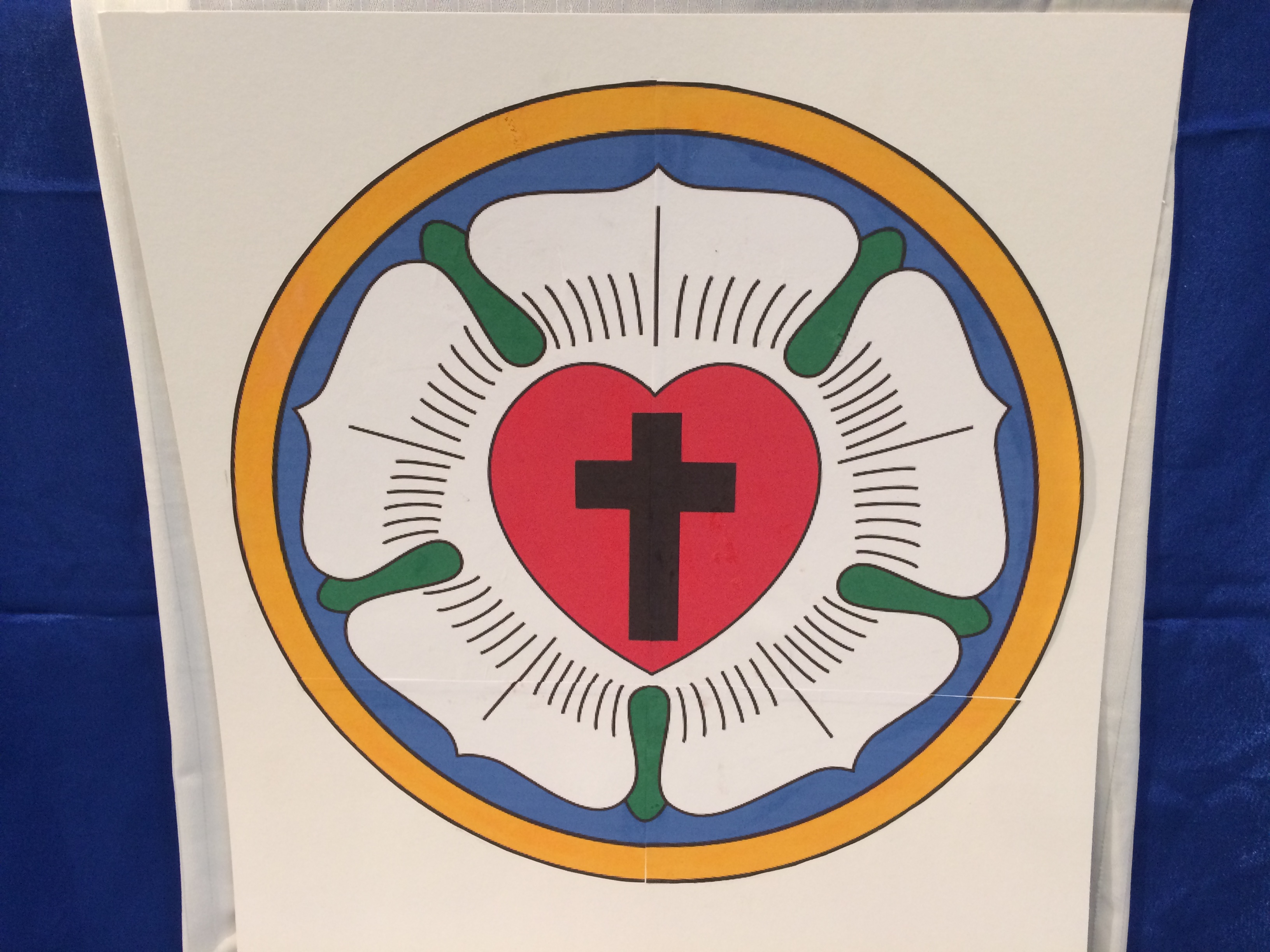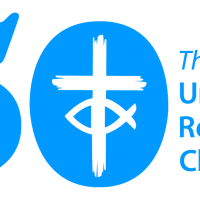St. Andrew’s United Reformed Church, Ealing, has held a special service to mark Reformation Sunday, five hundred years after Martin Luther first nailed his 95 Theses to a church door and set off the Protestant Reformation.
The church is remembering with sadness the bloodshed and the divisions that followed, even as it celebrates the origins of the Reformed tradition.
Reflections by Revd Sue McCoan
Bible Reading: Romans 3:19-28
Uncovering truth
For our first reflection, I’d like us to think back the Middle Ages, to what life was like in Western Europe. The vast majority of people at the time were Christian, and for the vast majority of those Christians, there was only one church, headed by the Pope in Rome. Everything those people knew about the Christian faith came through church teaching – from sermons, or from images in paintings and stained glass windows. The church upheld the authority of scripture, as well as tradition – but since nobody had access to bibles to read for themselves, they only knew what scripture the church taught. The church had to be right, and the Pope had to be right, because nobody knew otherwise.
That gave the Pope an incredible amount of power. And who was going to challenge that power? Not people within the church, who believed that the Pope could damn their souls to eternal hell. And not the secular rulers, who wanted to keep the Pope on their side, partly because if they had the Pope on board he would bring the people on board, and partly because they too feared for their eternal souls.
It’s not hard to see that, when you’ve got power like this going unchallenged, there is going to be corruption. The office of pope was fought over and exploited and riddled with corruption throughout the Middle Ages. Here is Pope Alexander VI – formerly Rodrigo de Borgia, famously corrupt. And with this at the centre, it’s not surprising that distortions creep into church teaching.
For instance: The church taught obedience, and good works, and giving to church funds, all good things in themselves. It taught that confessing a sin, and making penance, could clear the sin in this life – again, no bad thing. But any unconfessed sins would have to be cleared in Purgatory – the time of purging, or cleansing, of the soul after death to prepare it for heaven, greatly feared as a place of torment. And the church also taught – and this is where the distortion comes in – that you could pay money to reduce the time spent in Purgatory for all your unconfessed sins, for yourself or a loved one. By Luther’s time, the beginning of the16th Century, the church was selling Indulgences – effectively vouchers that said, for this much money, you get this much time off.
The church got rich. The money paid for the building of St Peter’s in Rome. The people soldiered on – especially the poorer ones, who had little hope of buying their way out of trouble.
There were plenty of people around at the time who could see that there was something not quite right about this – but they didn’t have the tools to put their finger on it. And then along came Martin Luther. Here’s the portrait of Luther by Lucas Cranach the Elder.
Luther didn’t set out to split the church. He didn’t set out to start a Reformation. He set out to study the Book of Romans. Trained as a lawyer, ordained as an Augustinian monk, he studied theology and went to teach it at the new university in Wittenberg. So he had access to the scriptures, and he knew Latin. But he had struggled with his faith, and in particular the thought that, no matter how hard he tried, no matter how often he went to confession, he never felt at peace with God.
And then, as he studied Romans, it changed his life.

Rejoicing in grace
It’s fair to say, Luther was not the first reformer, and not the only one. Others developed his ideas, sometimes argued with them. In the Reformed tradition in which we stand, as the United Reformed Church, we owe more to John Calvin than to Luther. I’ll say more about that later. But Luther kicked the whole thing off. He wrote out 95 Theses – 95 points of disagreement with the church – and famously nailed them on the door of Wittenburg Church. Which may not exactly have happened, but let’s not spoil a good story. The point was, he went public. And his friend made use of new media and got copies of the Theses printed off, so that his ideas spread very rapidly.
So what was it, that made this academic monk, who doesn’t look like a man given to great outbursts of joy, so excited?
It was his realisation that our good works, our human efforts, will never get us to God – that they don’t need to, because God has come to us, in Jesus Christ, and all we need is faith. Faith that Christ has done the work of redemption; faith to trust that our relationship to God is sorted, that we are made right with God, through the free gift of God’s grace. God has done it all; and all we are required to do is accept this gift in humility and gratitude.
What an astonishing relief, for someone who had worked so hard and tried so hard. And nobody had ever told him this. The church had never taught it.
That opened up all sorts of questions. What else was the church not telling people? What else was there in the Bible? And what was not there? Well, selling indulgences was not there, for one. So Luther set to, and came up with his list of 95 theological points to challenge the church on its teaching, and on its wealth.
Two further thoughts came through this. One was that, if people can experience the grace of God directly, there was no need of priests to mediate between the people and God. All believers shared in God’s priesthood.
The second was that, if other people had had access to the Bible, as he had, they could have found these things out for themselves, years ago. It wasn’t good enough for the church to say, ‘we’ll tell you what the Bible says’; people needed to be able to read it, in their own language, guided not by vested interests but by the Holy Spirit. All people should be able to know the grace and truth of God, pouring out from the pages, as he had.
Again, Luther wasn’t the first or the only person to think this, or to attempt a translation. But he pushed it forward, making his own translation of the New Testament into robust everyday German.
In 1530, a seal was designed for Martin Luther – these days we might call it a logo – which he used to seal his letters, and which he felt encapsulated his theology.
In the centre is the cross – the cross of Christ – held in a red heart, symbolising faith. This heart of faith is set in the middle of a white rose, a sign of joy. Surrounding the rose is a field of blue, representing present and future hope. And around the whole thing, a band of gold, the circle symbolising eternity and gold the bliss in heaven.
The Luther Rose has become the symbol of Lutheran churches. Here it is in a different version, from a Lutheran church in the US, with words in the gold band to remind us of three core principles: Word alone, faith alone, grace alone. Our tradition, I suggested earlier, is not the same as the Lutheran church. But these three core principles still hold for us too. This is a treasure we share.
But having uncovered the treasure, 500 years ago, what did people do with it? And what are we to do with it now?
We’ll look at those questions shortly. But first we sing the hymn, written and composed by Martin Luther himself: Our God stands like a fortress rock.
Moving forward in hope (semper reformanda)
In the first of the Ealing Abbey lectures on the Reformation, as listed in our October magazine and on the noticeboard, Professor John Morrill posed the question, ‘Was the Reformation necessary?’ His answer, broadly, was no. You may think, well, he would say that he’s a practising Roman Catholic. But he backed it up by pointing out that Luther’s criticisms were not unique, and that after the Protestants split away, the Catholic church carried out many reforms from within. If Luther had only been more patient, and less melodramatic, he suggested, the Christian faith could have been spared much bloodshed and division.
An interesting thought, which we don’t have time to look into now. But the professor was right to say that the Reformation cost lives, thousands of them. There were riots, there were wars on the continent – often because political power aligned with one group or another. Both Catholics and Protestants were imprisoned and executed for their faith. In England, even when Protestants were allowed to live, and worship, they were denied access to universities and to public office.
But the Protestants wouldn’t go away, and in parts of Europe, they became the dominant church. Germany, and the Scandinavian countries, followed the teachings of Luther. In France, Switzerland, Holland and Scotland, the main influence was John Calvin, leading into what we now know as the Reformed tradition. This went further than Luther in challenging, amongst other things, the structures of church governance. Reformed churches have no bishops, no hierarchy of authority. They include Congregationalists, where each congregation is independent; and Presbyterians, where leaders from a group of churches meet in councils to discern the will of God. The Church of Scotland is a Presbyterian church.
This is where we come in. We are called the United Reformed Church because we were formed, in 1972, by the uniting of two Reformed Churches: the Presbyterian Church in England and the Congregational Union of England and Wales – joined later by the Churches of Christ and the Congregational Union of Scotland.
So here we are. The huge question for us now is: where next? The principle of reformation that I haven’t yet mentioned is the idea that Reformation is a continuous process. The church reformed and always being reformed – reformata et semper reformanda.
You probably know that the URC was born out of the ecumenical movement of the 20th Century. Uniting those two churches was meant to be the beginning of a kind of snowball movement, where other churches would join in, into one big uniting church, as there is in Australia. You probably also know that this hasn’t happened. Structural unity, of merging whole organisations, turns out to need a vast amount of time and energy which can be better spent on other things.
So what are we here for? How are we to discern God’s will for us now?
We still have our commitment to unity. So that plays out now in working with other denominations, rather than merging: in Churches Together, in local ecumenical partnerships, in joint projects like food banks and night shelters.
And we can still draw from our Reformed roots: Word alone, Faith alone, Grace alone. We have the immense privilege of the Bible being easily available – there’s one in every chair here – and not just one English language version but in a whole variety of styles and interpretations, from the poetry of the King James to the freedom of The Message, whichever suits us best. There are Bible reading notes and schemes to guide us through. Martin Luther would have wept for this luxury, and we take it for granted. Let’s get into our Bibles.
We have the joy of knowing that all we have, all our faith, all our forgiveness, is not from our effort but from the freely given grace of God. So it’s not hard work. Our discipleship is a response of love to this tremendous gift, and is in itself a gift to us. So let’s get into a regular habit of prayer and thankfulness.
And we have the challenge of being Reformed, and always reforming. I don’t know what the future of this denomination will be. But God does. Our call is to attend to our discipleship, and see where the Spirit leads us next.







